The Honor 10 Lite is the Huawei sub-brand’s first smartphone for 2019 and just like last year’s Honor 9 Lite, this one’s aimed at the everyone looking for a smartphone under a strict budget of Rs 10,000-12,000.
The Honor 10 Lite tries to build on what its predecessor offered — a great everyday performer in a package which was gorgeous to look at. While the onus this year was on improving performance, it’s no longer a beautiful slab of glass and polycarbonate. Honor had to cut corners to keep the price low here, and it shows.
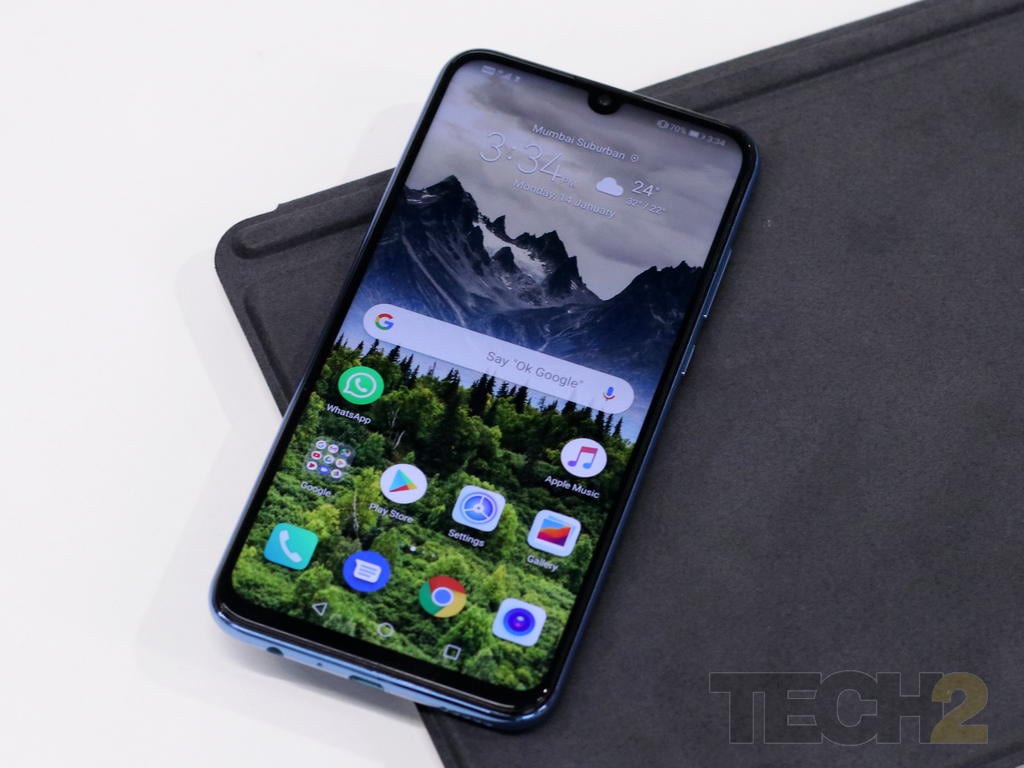
Honor 10 Lite starts at a price of Rs 13,999. Image: tech2/Omkar Patne
Design aside, everything else on the phone is an upgrade. When I say upgrade, I don’t just mean a Redmi Note 6 Pro-like incremental upgrade. Right from the cameras to battery life, the Honor 10 Lite is a full-fledged upgrade. But is it really worth picking up for Rs 11,999? Well, you’ll have to read on to find out.
Honor 10 Lite Build and Design: 8/10
Honor’s decided to go with an all plastic build this time instead of going with the glass back we saw earlier. This might sound unimpressive, but it helps keeps the cost low. That said, the Honor 10 Lite is still one of the best-looking smartphones at its price. Pick it up and the first thing that catches the eye is a beautiful gradient back which hasn’t been done on any budget phone yet. Not everyone may dig the choice of a gradient back (and there’s always a plain black variant for them) but it did grow on me over a short period. However, this too is a smudge magnet, so you might want to slap on the clear case (part of the package) if you have sweaty palms as I do.
The front also gets a makeover. We now have a dewdrop notch sitting on top of the display which houses only the front-facing camera. To make room for more display space, the earpiece has been moved right to the top lip of the phone, making it almost invisible. Moving on to the bottom of the display, there is a chin, but courtesy of Huawei’s chip-on-film technology (COF), it is marginally smaller than what you’d see on other budget smartphones.
For those wondering what COF is all about, it’s essentially a process that allows a chip (powering the display), which would normally sit at the bottom edge of the display (making for a bigger chin) to be mounted below the display. While this saves millimetres of space, it also allows manufacturers to reduce the size of the bottom chin. Apple gets around this by rolling up the display at the edge and while it is effective, the process is also expensive. When held alongside a Redmi Note 6 Pro, the Honor 10 Lite's bottom bezel (chin) does look a lot thinner.
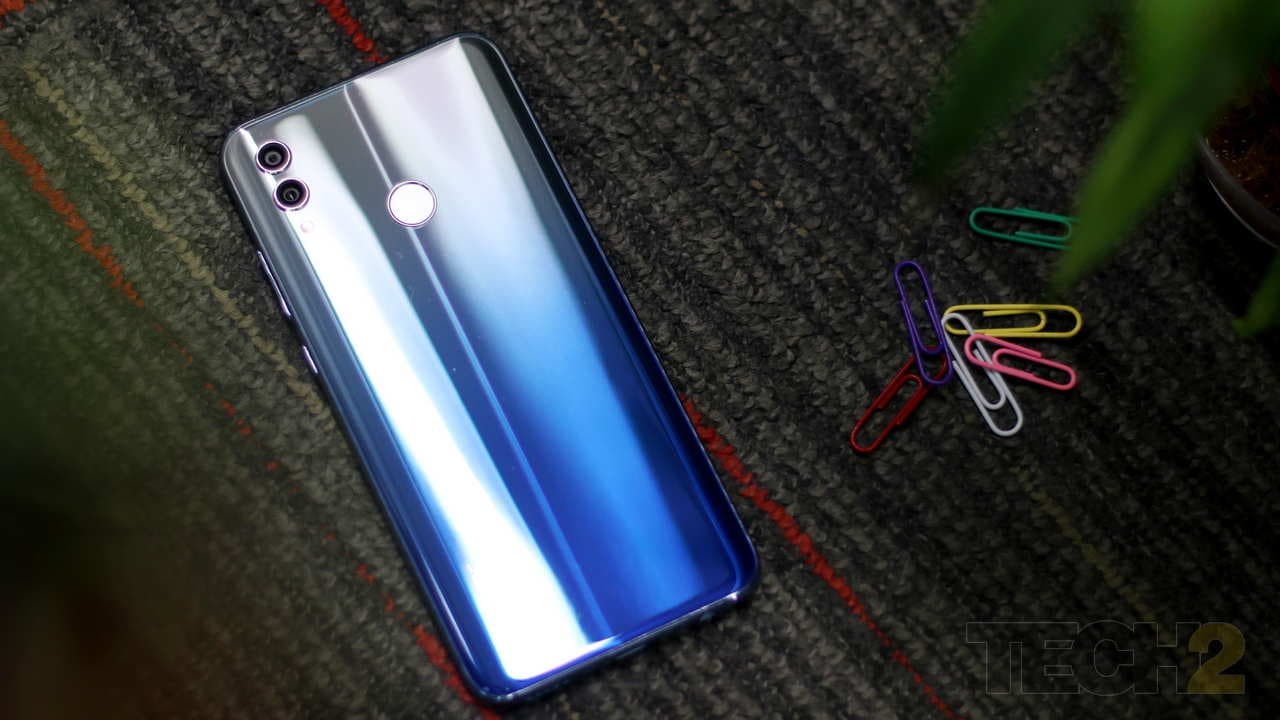
The back features a gradient finish which is a segment first. Image: tech2/Omkar Patne
When it comes to holding the phone, the Honor 10 Lite does feel less premium compared to its predecessor. I think the plastic back is responsible for this, but because of the plastic, the phone is also very light (at 162 g), and it does feel sturdy. The rounded edges do help with grip and the button placement is right on point.
Moving on to the bottom of the phone, you still get a micro USB port, a 3.5 mm headphone jack and a single speaker. The fingerprint scanner sits on the back where you’d normally expect to find it, while the SIM tray is located on the top of the phone.
Overall, the Honor 10 Lite is definitely a looker and the gradient back really sets it apart from the competition.
Honor 10 Lite Display: 7.5/10
Notches have gotten smaller over the span of 2018 and one way of maximising usable display space is by slapping on a dewdrop notch. That’s exactly what Honor has done. No punch-hole camera here yet, but it’s still a very small notch.
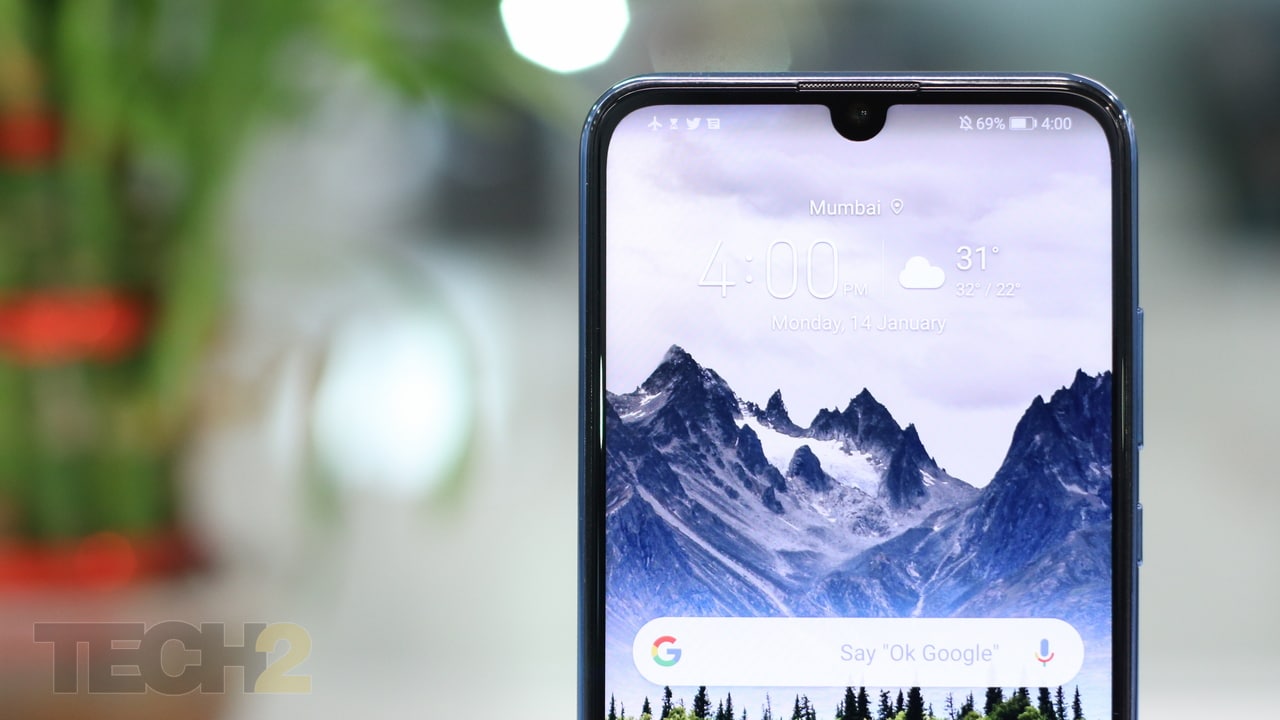
The Honor 10 Lite features a 6.21-inch LCD display in a chassis which is smaller than the Redmi Note 6 Pro and the Asus Zenfone Max Pro M2. Image: tech2/Omkar Patne
The Honor 10 Lite features a 6.21-inch IPS LCD panel with a resolution of 1920 x 1080 pixels, which is standard for this price segment. We still have an impressive screen-to-body ratio of 91 percent, as was the case with the Honor 8X, and the borders aren’t too thick either. What you get here is a display which is about as big as that on the Redmi Note 6 Pro and the Zenfone Max Pro M2, but in a smaller body. The smaller chin also helps in this.
As for the panel itself, colours are vibrant and punchy while white tones are kept in check. If saturated colours are your thing, then there’s also a vivid mode under display settings. The display also gets adequately bright for bright outdoor use. If the default colour temperatures aren’t to your liking then Honor even lets you tinker around with them via settings.
If watching long hours of Netflix is your thing, you definitely won’t be disappointed with the display area you get with this phone. However, the Honor 10 Lite only features an L3 Widevine clearance — a form of DRM used by apps like Netflix — which means you can’t stream full HD content from many services.
Honor 10 Lite Features: 8/10
The Honor 10 Lite unit we received for review is the one which features 6 GB of RAM and 64 GB of storage. There’s also a variant with 4 GB of RAM and the same amount of storage.
On the hardware side of things, there is a 6.21-inch FHD+ IPS LCD display with an aspect ratio of 19.5:9. Under the hood, the phone packs in a Kirin 710 SoC along with a Mali-G51 MP4 GPU.
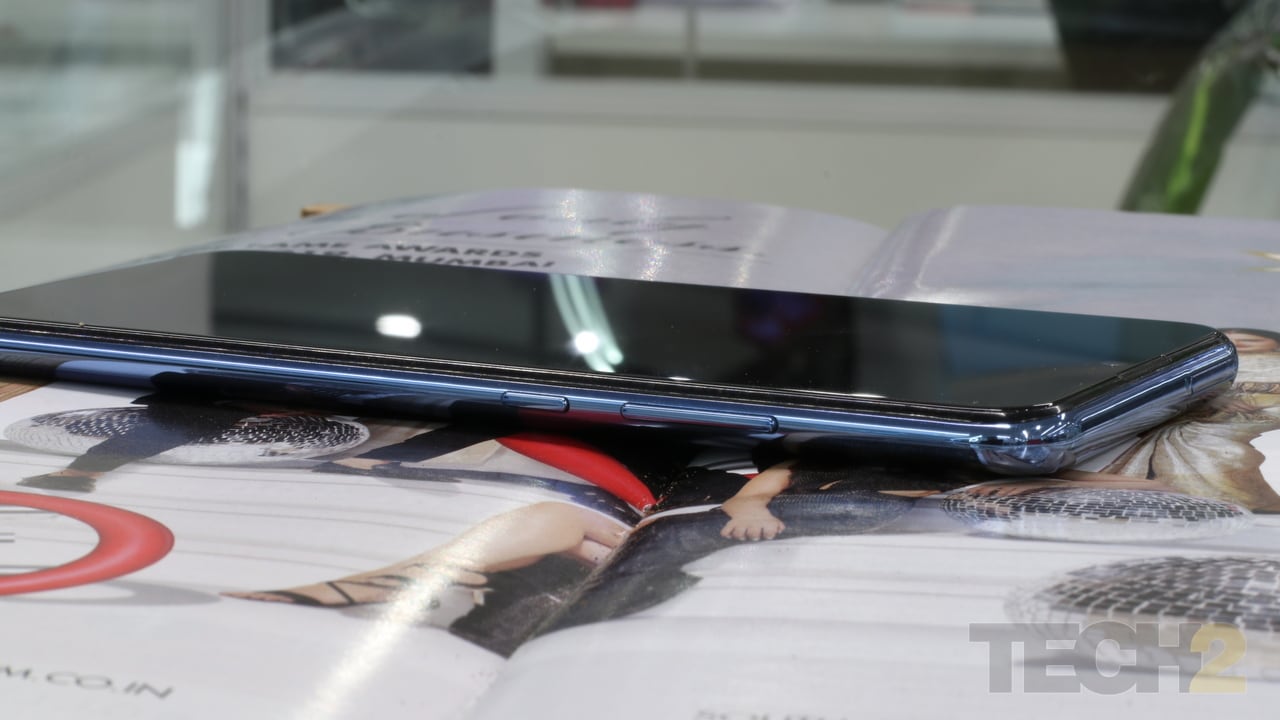
The buttons placed on the right side of the phone are clicky and are positioned perfectly. Image: tech2/Omkar Patne
For cameras, the phone gets a dual-lens setup on the back comprising of a 13 MP primary sensor with an f/1.8 aperture and a secondary 2 MP depth sensor. There is a new 'night mode' and also an AI mode in the camera settings, which I will explain in greater detail later on in the review. On the front of the phone, we see a 24 MP AI camera with an f/2.0 aperture.
On the software side of things, the Honor 8X runs Android 9.0 Pie with Huawei’s EMUI 9 running on top. In terms of connectivity options, we have dual-SIM 4G VoLTE support along with Wi-Fi 802.11 a/b/g/n/ac, Bluetooth 4.2, micro USB 2.0 OTG port, GPS and a 3.5 mm headphone jack. The entire setup is powered by a 3,400 mAh battery without any quick charge capabilities.
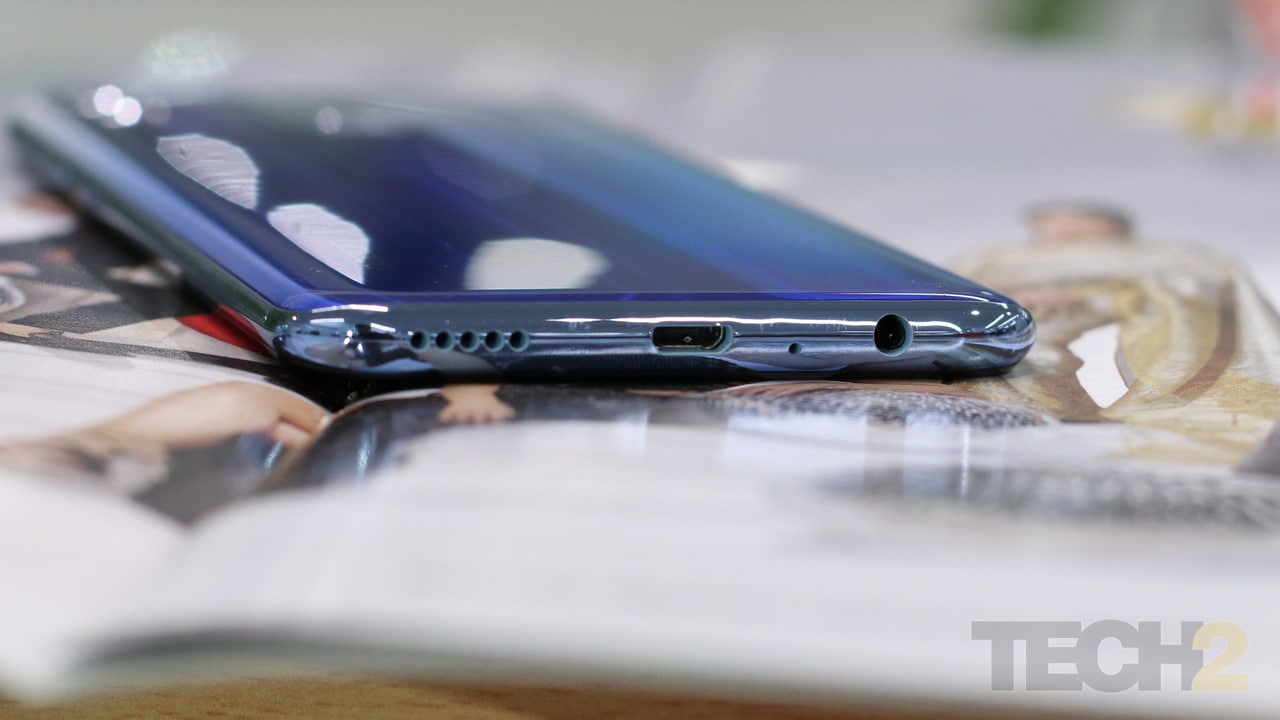
It's 2019, but the Honor 10 Lite still gets a regular micro USB port and a single speaker. Image: tech2/Omkar Patne
Honor 10 Lite Software: 7/10
The Honor 10 Lite comes with Android Pie, skinned with Huawei’s EMUI 9 software. This won’t be to everyone’s tastes, admittedly, especially Android purists who prefer the stock experience.
Personally, I’m one who sways more towards a clean UI, one without a ton of added customisation options. Still, I found EMUI 9 to be quite unobtrusive in terms of function. Elements that you don't need to interact with aren't thrown in your face.
The only real issue is that animations are heavy and the phone does stutter here and there, even if the task at hand is as simple as displaying my recently used apps. It’s clear that Huawei has taken great pains to improve it over the years, but there’s definitely loads to be done. Maybe take a page off Samsung’s OneUI approach?
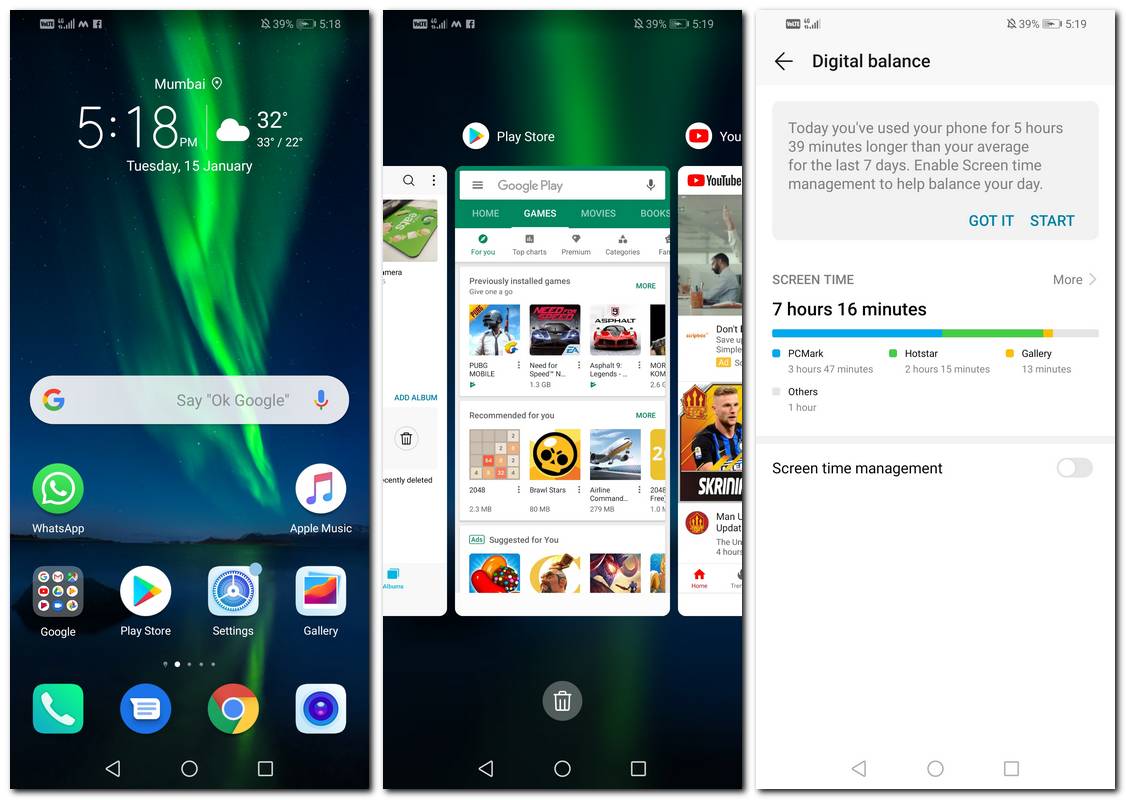
Android Pie-based EMUI 9 on the Honor 10 Lite
There’s also a load of bloatware. Besides the usual stock Huawei Android apps (like Huawei Health), there’s SwiftKey (which I immediately replaced with Google’s Gboard) and a bunch of other apps like Camera 360, an outdated version of Netflix, Vigo Video, Facebook and Facebook Messenger.
An interesting feature which I really liked was the inclusion of a smart display resolution feature that increases or decreases the screen resolution in certain apps in a bid to improve battery life.
Honor supports Android Pie's Digital Wellbeing features, which can get annoying at times. Apart from that, if you are accustomed to EMUI, there’s not much of a learning curve. All said and done, my only major gripe with the software is how heavy the stock launcher is. Replace it with any other third-party launcher and you’ll see a noticeable bump in responsiveness.
Honor 10 Lite Performance: 7.5/10
The Honor 10 Lite isn’t the first phone in India to feature Huawei’s Kirin 710 SoC and while it does a very good job of handling multiple apps at the same time, the phone is not quite capable of hitting top gear with heavy games yet.
Games such as PUBG Mobile and Asphalt 9: Legends ran on medium settings and there were some dropped frames, which was especially noticeable during extended gaming sessions. Lighter games such as Mini Militia and Battlelands Royale ran well, as expected. Thankfully, the phone at least doesn't get too hot.
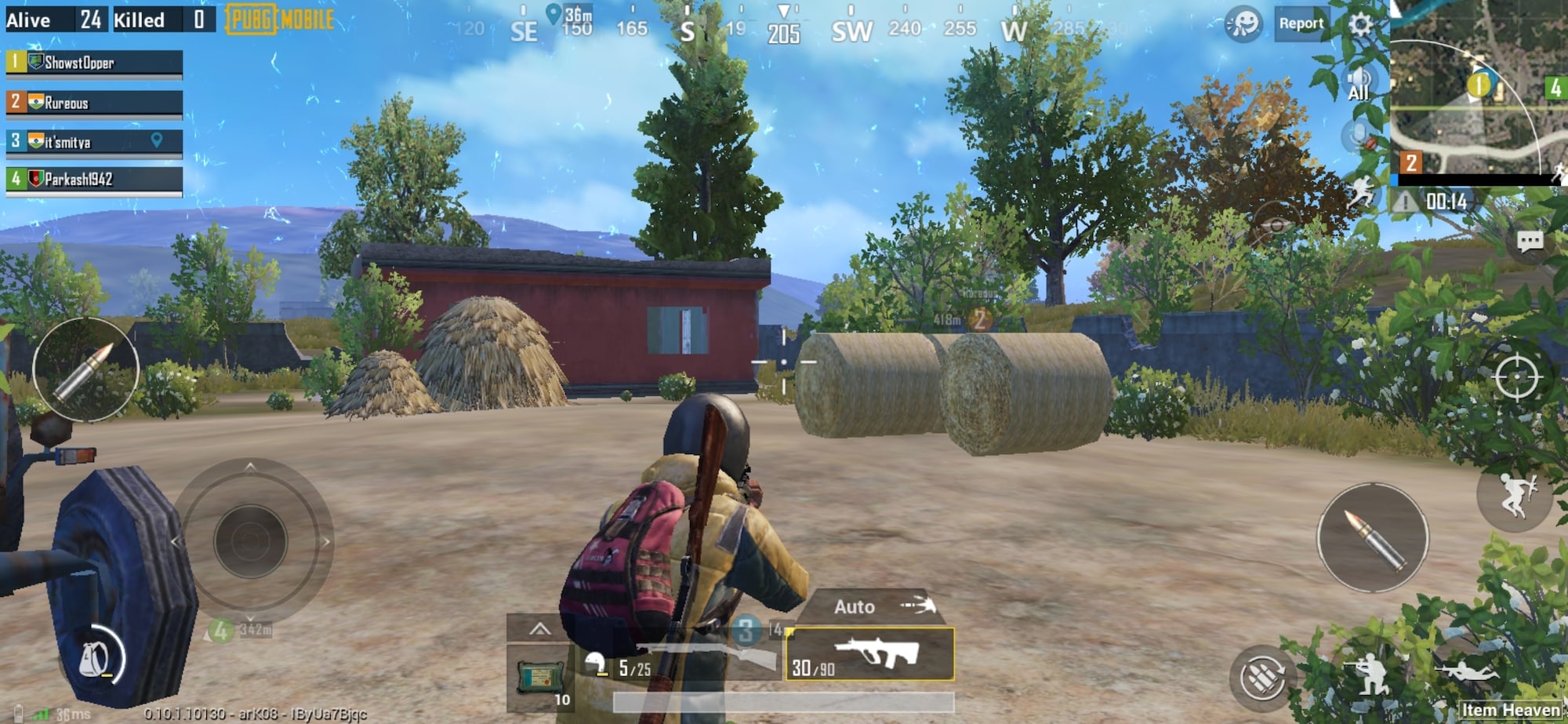
PUBG Mobille on Honor 10 Lite
At this price, the Honor 8X does a good job especially considering that there are few other phones in this price bracket that can handle PUBG and Asphalt 9 at even medium settings. I could switch between apps with ease and they'd always be there waiting for me. It was only when the battery was low that apps would have to be reloaded, but that's to be expected.
In terms of audio, I was just happy to see a headphone jack, which has become somewhat of a novelty in 2019. The speaker does get very loud but audio gets muffled at maximum volume. Call quality was also excellent and so was the performance of the fingerprint sensor and the software-enabled face-unlock feature.
Honor 10 Lite camera: 7/10
The camera segment is one area where most Honor smartphones fail to meet expectations, and sadly, nothing changed with the company’s first budget offering of 2019. The UI is simple and relatively easy to get used to, but given the sheer number of modes on offer, it does take a while to get the hang of what’s useful and what’s borderline gimmicky.
The smartphone sports a dual-camera setup at the back, which is a combination of a 13 MP f/1.8 primary sensor and a 2 MP depth sensor stacked vertically. Up front is a 24 MP f/2.0 camera sensor with AI support.
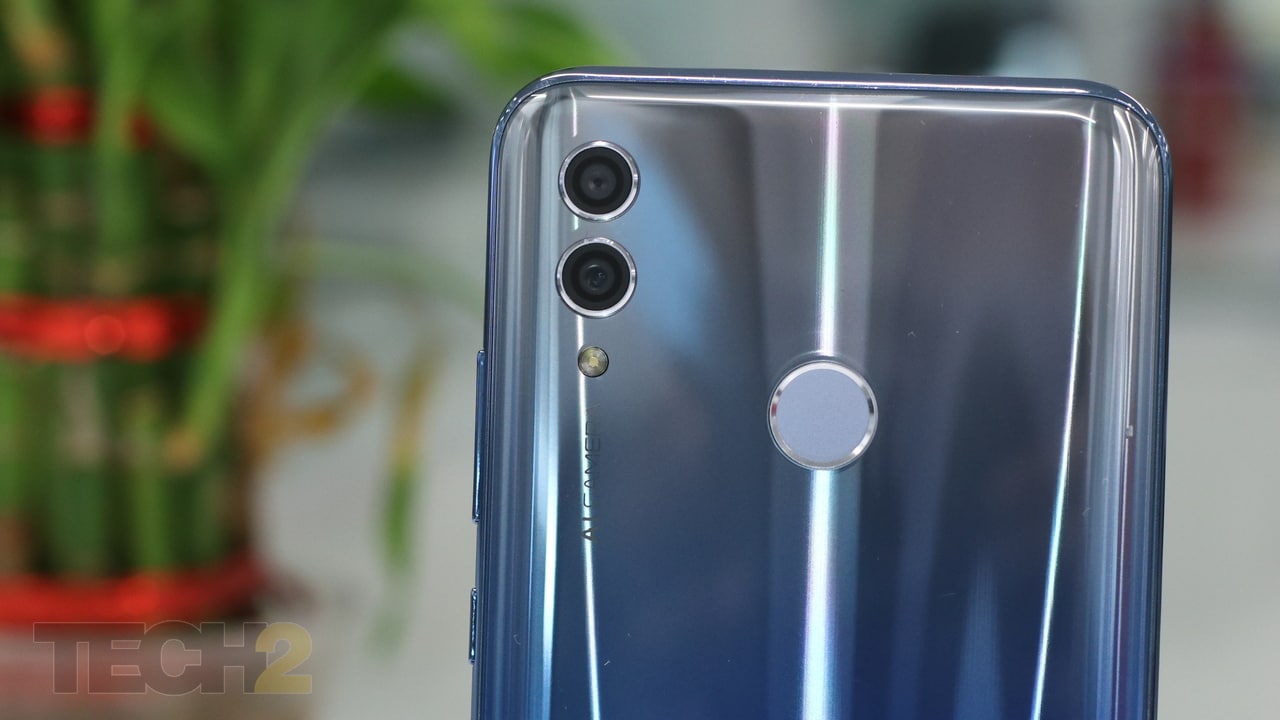
The Honor 10 Lite gets a 13+2 MP dual-camera setup at the back. Image: tech2/ Omkar Patne
As for the images shot using the dual-rear camera setup, colours are oversaturated and dynamic range isn't consistent between shots, something that was a feature with the cameras on the Honor 8X. The camera also often struggles to get the exposure right. Daylight shots turned out fine, but having Honor’s Master AI software switched on did not really have much of a bearing on the resulting images. Colour tones do look a tad bit oversaturated but if you’re going to use this camera for Instagram post and stories, it’ll do the job just fine.

Selfie Portrait comparison Honor 10 Lite (L); Asus Zenfone Max M2 (C); Redmi Note 6 Pro (R)
Focusing speeds are quick and there’s very little shutter lag. The Master AI also features scene detection, enabling it to tinker around with colours accordingly. Here again, switching the Master AI off did not have much of an effect on the images.
The portrait mode wasn’t anything to write home about either. Edge detection is one area that the camera appeared to struggle a fair bit, even when the subject is adequately lit. Compared to the likes of the Redmi Note 6 Pro and the Zenfone Max M2, the Honor 10 Lite does fall off the pace a fair bit here.

Portrait Mode Comparison: Honor 10 Lite (L); Asus Zenfone Max M2 (C); Redmi Note 6 Pro (R)
As for the different modes, I did try out the panorama and the night mode and they did the job fairly well. While panorama fails to pack in a lot of detail, night mode did do a decent job in low-lighting situations. The camera takes six images at different exposures and then lets the Master AI do the processing. The images do become a tad grainy due to the over-sharpening, but they’re definitely usable. HDR seemed quite pointless to me as it made little difference to pictures.

Regular Automatic Mode (L) vs Night Mode (R)
Moving on to the front-camera, the images turned out well in well-lit conditions but you do have to make sure you have all the beauty modes turned off. The skin-tones are definitely not accurate but again, if you’re going to put on a filter for Instagram anyway, this will do just fine. Edge-detection here turned out slightly better than that on the rear-cameras, but they’re still nowhere close to perfect.
Video recording (capped at 1080p) on the Honor 9N was decent with everything being overexposed when using the selfie camera. The dynamic range was better with the rear camera, but the videos are too jerky despite being clear and you have to have really steady hands to keep the footage jitter free.
Honor 10 Lite Battery life: 7.5/10
The Honor 10 Lite packs a 3,400 may battery which with medium to heavy usage, easily got me through the day with roughly 25 percent to spare. I got through more than a day of usage on the device using 4G VoLTE and streaming a ton of videos on YouTube, Netflix as well as Hotstar, while simultaneously having an active Telegram, WhatsApp and Gmail account.
It didn’t take me too long to charge the Honor 10 Lite either. You still get a standard 5V 2A charger in the box — twice as powerful as the one that comes with an iPhone, it took me roughly an hour and ten minutes to charge the phone from just under 15 percent to 100. The downside with the smaller battery is that the phone does not last as long as the Redmi Note 6 Pro and is nowhere close to the Asus Zenfone Max Pro M2.
Price and Verdict
Priced at Rs 13,999 for the variant with 4 GB and 64 GB storage, the Honor 10 Lite is quite difficult to recommend. Sure, the smartphone looks great for the price, but there’s nothing else to write home about here. Performance is about average, the software experience isn’t the best and the camera just about gets the job done. Sadly, these are issues that Honor’s budget phones have been coping with for a while now.
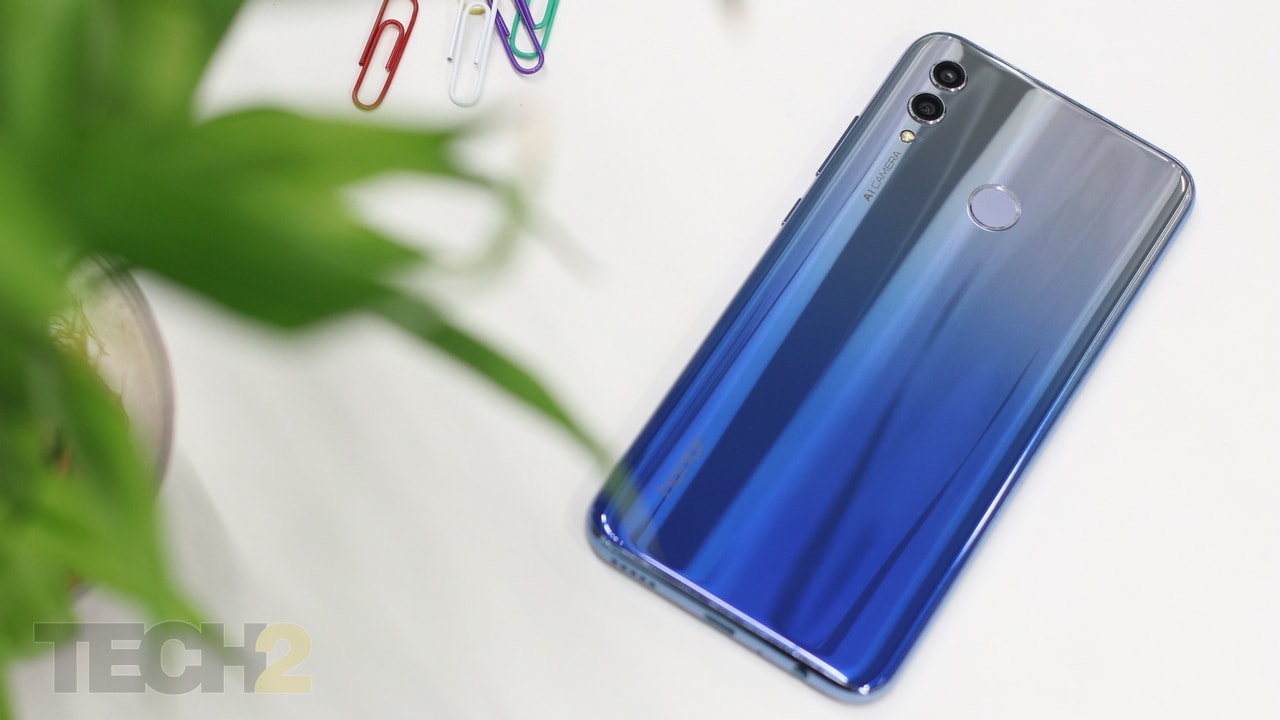
The Honor 10 Lite looks great but doesn't manage to impress when it comes to camera performance. Image: tech2/ Omkar Patne
If you’re looking for a smartphone which will grab a lot of eyeballs on a public commute, then look no further than the Honor 10 Lite. But if you’re trying to find the best overall performer under a budget of roughly Rs 15,000-18,000, then there are a bunch of other phones to look at.
The Redmi Note 6 Pro (Rs 13,999 4 GB + 64 GB), the Realme 2 Pro (Rs 13,990 4 GB + 64 GB) and the Asus Zenfone Max Pro M2 (Rs 12,999 3 GB + 32 GB) and even the Honor 8X (Rs 16,999 4 GB + 64 GB) are all great options to look at if you’re willing to spend Rs 15,000 on a smartphone. The Honor 10 Lite just doesn’t do enough to warrant a spend.
Tech2 is now on WhatsApp. For all the buzz on the latest tech and science, sign up for our WhatsApp services. Just go to Tech2.com/Whatsapp and hit the Subscribe button.
Source

Nice device
ReplyDelete